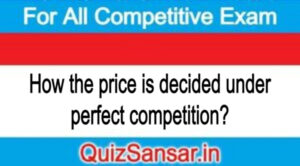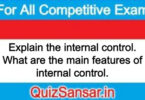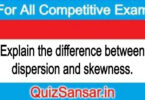
How the price is decided under perfect competition?
How the price is decided under perfect competition?
OR
What is meant by Perfect competition ? Explain the determination of price under perfect competition.
Ans.
A perfectly competitive market is one in which the number of buyers and sellers is very large, all engaged in buying and selling a homogeneous product without any artificial restrictions and possessing perfect knowledge of market at a time. In the words of A. Koutsoyiannis. “Perfect competition is a market structure characterised by a complete absence of rivalry among the individual firms.” According to R.G. Lipsey, “Perfect competition is a market structure in which all firms in an industry are price takers and in which there is freedom of entry into, and exit from, industry.”
Characteristics of Perfect Competition:
The following are the conditions for the existence of perfect competition:
(1) Large Number of Buyers and Sellers: The first condition is that the number of buyers and sellers must be so large that none of them individually is in a position to influence the price and output of the industry as a whole. The demand of individual buyer relative to the total demand is so small that he cannot influence the price of the product by his individual action.
Similarly, the supply of an individual seller is so small a fraction of the total output that he cannot influence the price of the product by his action alone. In other words, the individual seller is unable to influence the price of the product by increasing or decreasing its supply.
Rather, he adjusts his supply to the price of the product. He is “output adjuster”. Thus no buyer or seller can alter the price by his individual action. He has to accept the price for the product as fixed for the whole industry. He is a “price taker”.
(2) Freedom of Entry or Exit of Firms: The next condition is that the firms should be free to enter or leave the industry. It implies that whenever the industry is earning excess profits, attracted by these profits some new firms enter the industry. In case of loss being sustained by the industry, some firms leave it.
(3) Homogeneous Product: Each firm produces and sells a homogeneous product so that no buyer has any preference for the product of any individual seller over others. This is only possible if units of the same product produced by different sellers are perfect substitutes. In other words, the cross elasticity of the products of sellers is infinite.
No seller has an independent price policy. Commodities like salt, wheat, cotton and coal are homogeneous in nature. He cannot raise the price of his product. If he does so, his customers would leave him and buy the product from other sellers at the ruling lower price.
The above two conditions between themselves make the average revenue curve of the individual seller or firm perfectly elastic, horizontal to the X-axis. It means that a firm can sell more or less at the ruling market price but cannot influence the price as the product is homogeneous and the number of sellers very large.
(4) Absence of Artificial Restrictions: The next condition is that there is complete openness in buying and selling of goods. Sellers are free to sell their goods to any buyers and the buyers are free to buy from any sellers. In other words, there is no discrimination on the part of buyers or sellers.
Moreover, prices are liable to change freely in response to demand supply conditions. There are no efforts on the part of the producers, the government and other agencies to control the supply, demand or price of the products. The movement of prices, is unfettered.
(5) Profit Maximisation Goal: Every firm has only one goal of maximising its profits.
(6) Perfect Mobility of Goods and Factors: Another requirement of perfect competition is the perfect mobility of goods and factors between industries. Goods are free to move to those places where they can fetch the highest price. Factors can also move from a low-paid to a high-paid industry.
(7) Perfect Knowledge of Market Conditions: This condition implies a close contact between buyers and sellers. Buyers and sellers possess complete knowledge about the prices at which goods are being bought and sold, and of the prices at which others are prepared to buy and sell. They have also perfect knowledge of the place where the transactions are being carried on. Such perfect knowledge of market conditions forces the sellers to sell their product at the prevailing market price and the buyers to buy at that price.
(8) Absence of Transport Costs: Another condition is that there are no transport costs in carrying of product from one place to another. This condition is essential for the existence of perfect competition which requires that a commodity must have the same price everywhere at any time. If transport costs are added to the price of the product, even a homogeneous commodity will have different prices depending upon transport costs from the place of supply.
(9) Absence of Selling Costs: Under perfect competition, the costs of advertising, sales-promotion, etc. do not arise because all firms produce a homogeneous product.






